- In line with broader market, private share prices pull back in February
- Seller activity hits new high levels on the Forge platform
- Buyers seek better prices, sellers begin to reset expectations
- Forge continues to drive private market transparency through data and insights
“How’s the market?”
Public market investors can answer this question in a split second. Stock prices, index levels, and bond yields are available online, on TV, and even on Times Square billboards. As investors and shareholders chart a course forward in today’s volatile market, data is beyond essential – it is foundational.
The private market is not insulated from volatility. But despite being a large and growing source of capital activity, answering this basic question has historically been difficult.
As more and more investors participate in the private market, Forge Global aims to change that. The Forge Data platform enables investors to see real-time changes in the private markets from Forge Markets trading activity, and this source of insight is the foundation of the March Private Market Update. It’s our attempt to answer this question for market participants.
More data, more insight, more transparency. As Forge Global prepares for its public market debut, it’s just another way the lines are blurring between the public and private market.
Private market transaction prices down -10%1
In February, we reported that seller interest outpaced buyer interest on the Forge platform as the broader market downturn led more employees to inquire about selling their vested equity.
These trends now show up in completed transactions. On average, prices in February fell –10% for companies that traded on Forge Markets in both Q4 2021 and February 2022.2 Meanwhile, the Renaissance IPO ETF, which holds many of the newest public tech companies, lost –28.4% from the beginning of October through the end of February.3
Although some softening has started to appear in the private market, the overall picture does not suggest overreaction. Decreasing prices may be new territory for some pre-IPO shareholders, but they seem to be proceeding cautiously. For investors, more sellers participating in the private market may yield a better opportunity to land shares of pre-IPO companies at favorable prices.
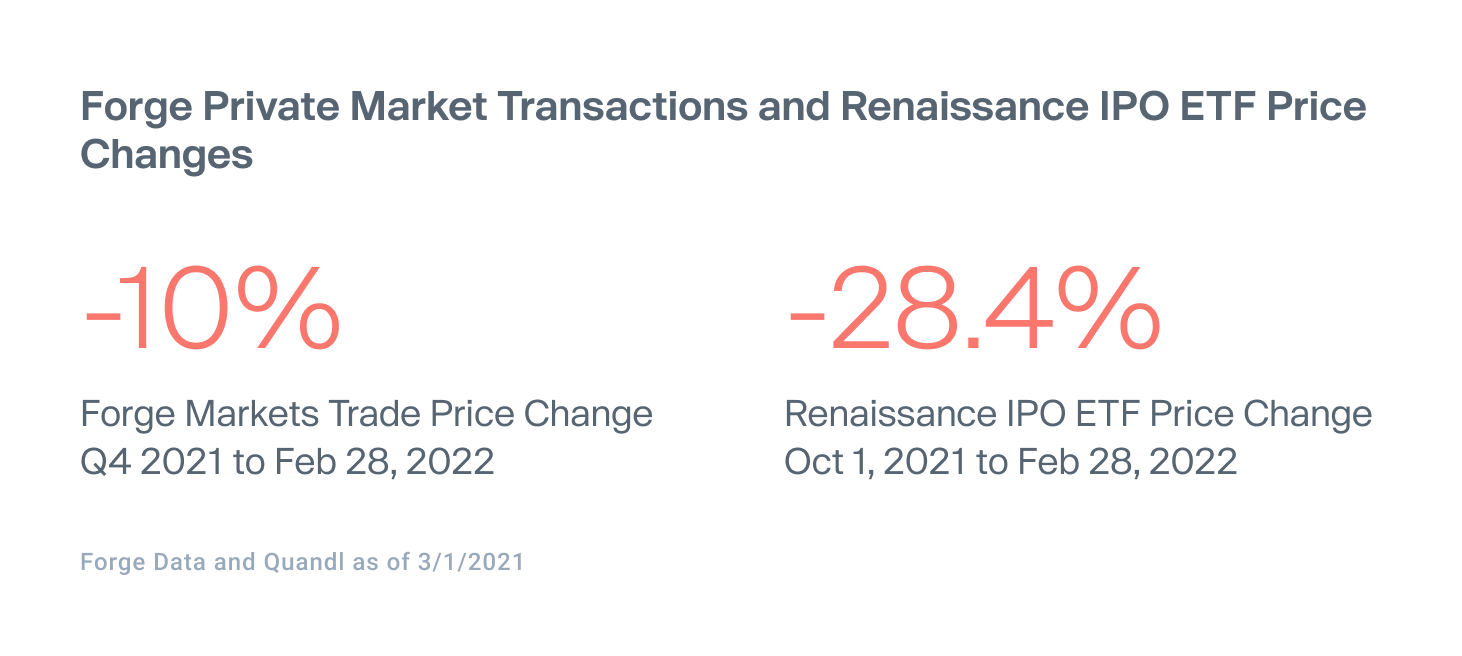

Investors may find lessons in previous market corrections
It feels like forever ago, but there was widespread panic in markets when COVID-19 first emerged. Public markets fell dramatically in March 2020 before steadily marching upward for the rest of the year and into 2021.
During the height of the COVID-19 crisis, the private market mirrored the public market: panic, followed by rising prices. When comparing private companies that traded on Forge in both Q4 2019 and during the COVID-19 drawdown, investors were rewarded for deploying dry powder during that uncertain period.


Record levels of seller activity on the Forge platform
Can lessons from the COVID-19 drawdown be applied today? If the private market is indeed correcting, opportunistic investors may have a unique opportunity to capitalize on increased seller activity.
In February, 60% of indications of interest (IOI’s) on the Forge platform were from sellers – the highest reading since Q1 2020.4
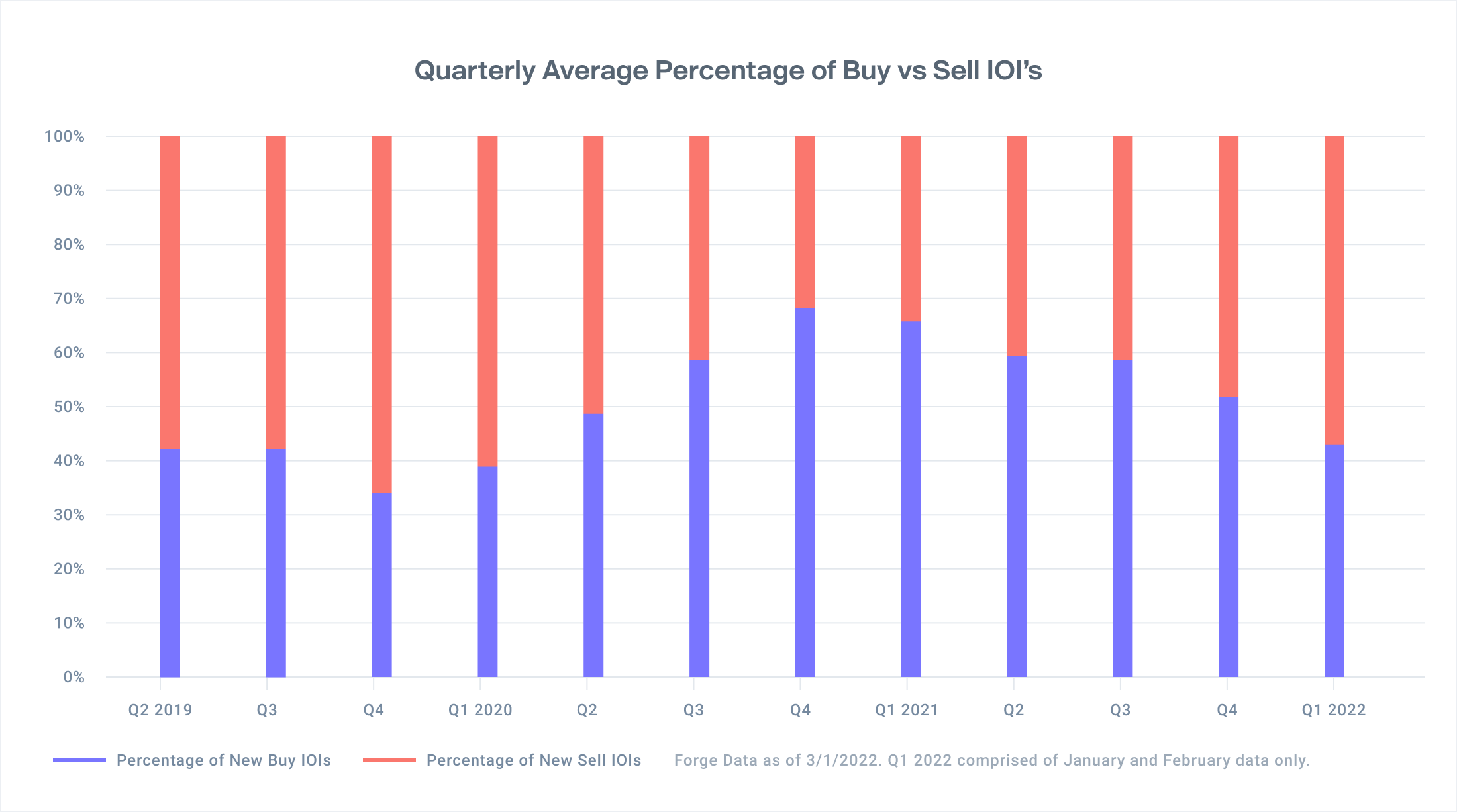

In total, there are nearly 600 unique pre-IPO companies on the Forge platform with indications of interest from sellers, suggesting a large market for investors to discover.5
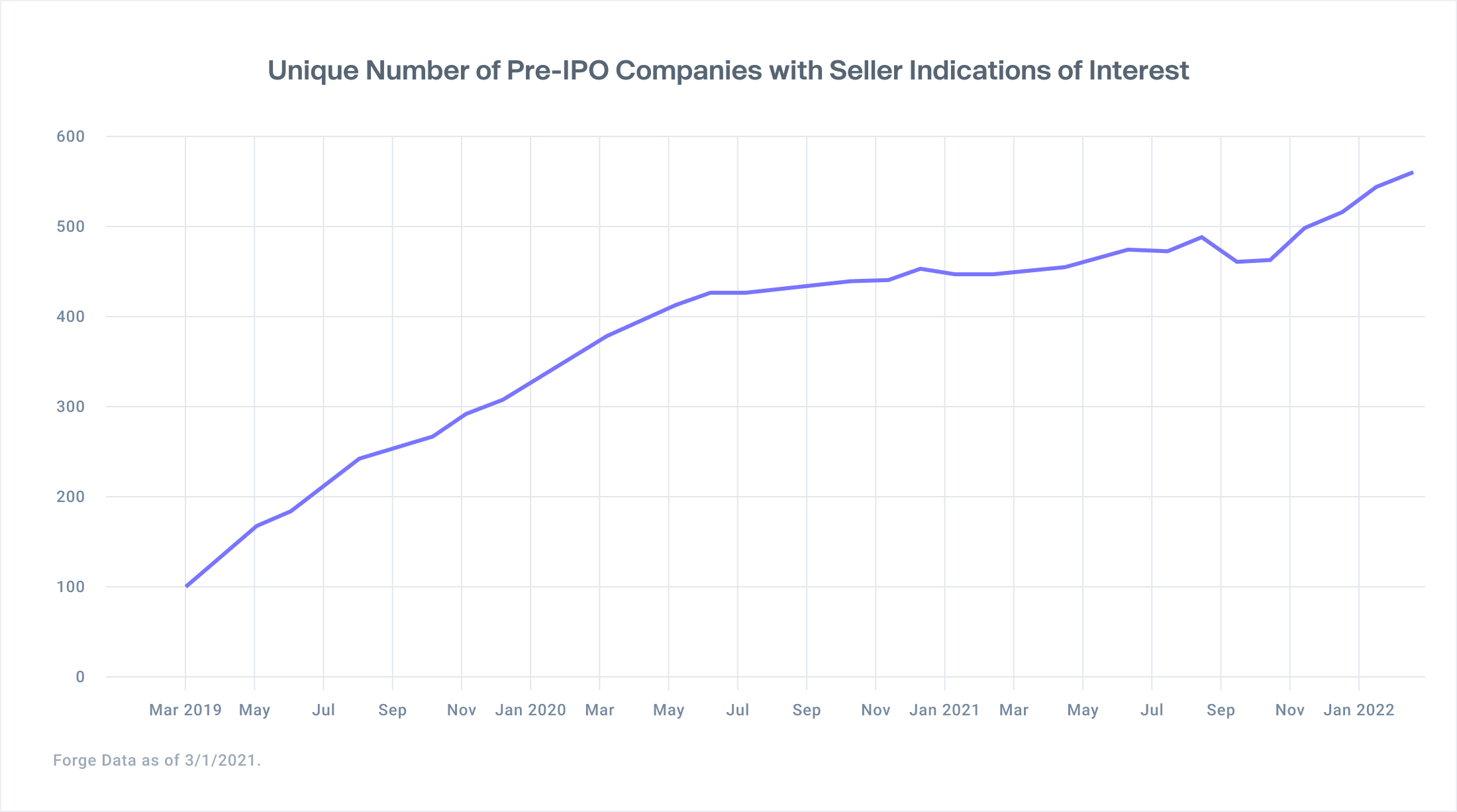

And these are not zombie companies. In both January and February of 2022, sellers from nearly 160 unique companies came to Forge Global seeking to sell shares.6 This is the highest reading since March 2019 and suggests a regularly refreshed, up-to-date crop of pre-IPO companies for investors to consider every month.
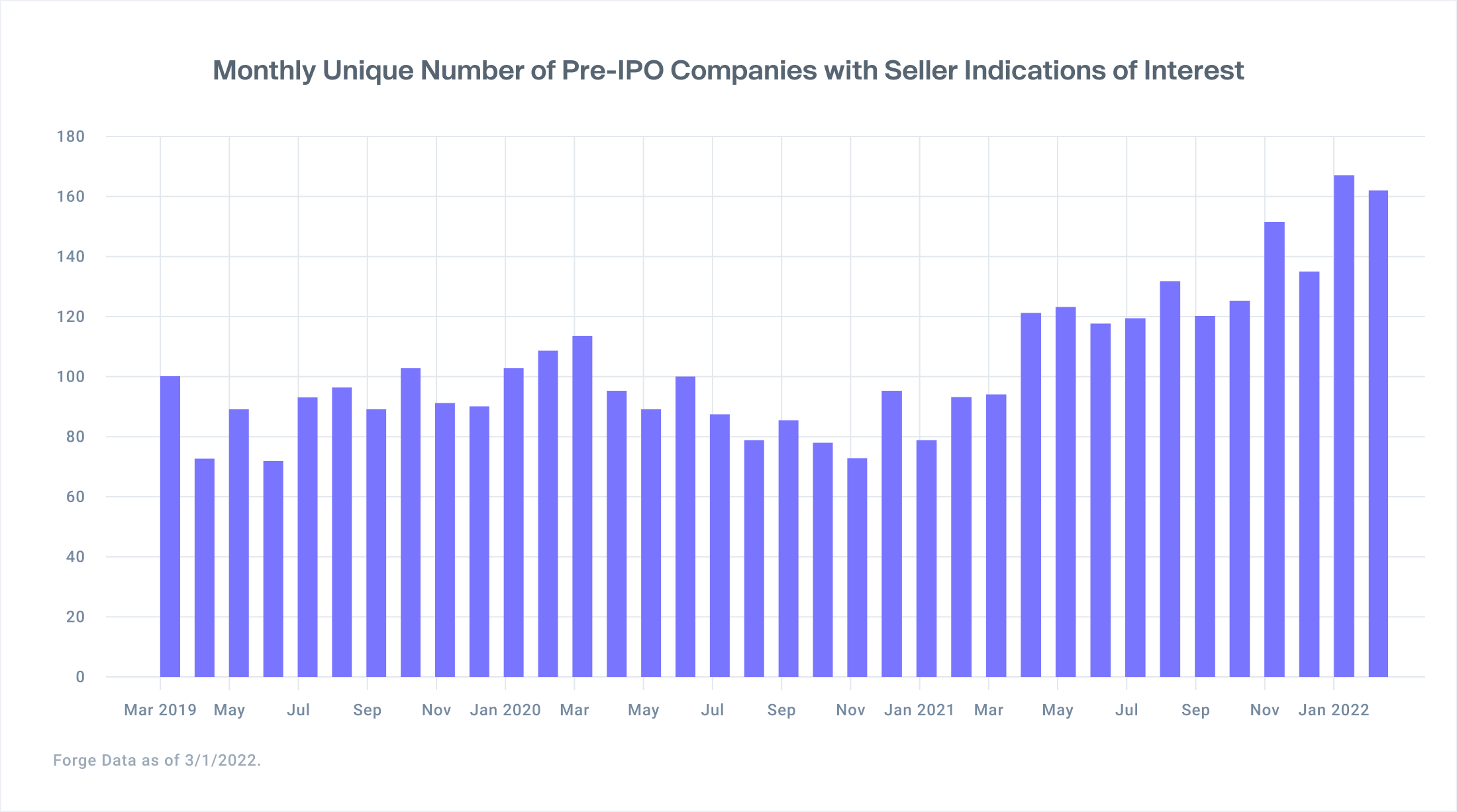

Multiple factors drive this supply: the overall growth of the private market, increasing awareness of liquidity options for private company employees, the slowing pace of IPOs and SPACs, market forces leading shareholders to sell stock, and Forge’s shareholder engagement efforts.
For investors, this increase in supply may mean a greater likelihood of securing investments in often elusive private companies.
Will downward pricing pressure persist?
Market corrections can lead employees and early shareholders to shift their attitude toward private stock. When everything is up and to the right, pre-IPO employees may hold their shares until they get a premium price. As the market turns and they digest the impact of the drawdown on their finances, they may consider selling at a discount. Emotions drive the private market just as they do the public market.
This trend is beginning to emerge in Forge’s market data. There is a small uptick in sellers offering their shares at a slightly widening discount to their company’s last fundraising price.
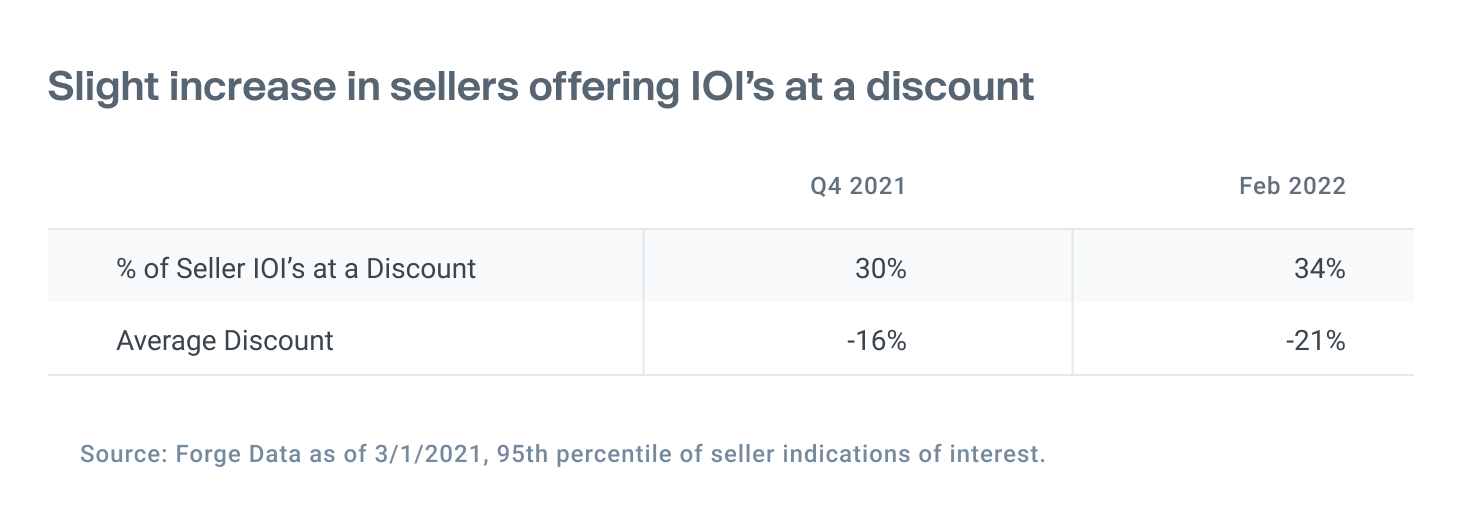

Sensing opportunity, this trend is more pronounced from investors. A larger percentage of investors are seeking to buy shares at a discount – increasing from 33% to 46%.7 Similar to sellers, the average discount increased only slightly.
As leading indicators, these IOI’s may continue shifting and offer a glimpse of how the market will unfold in the coming months.
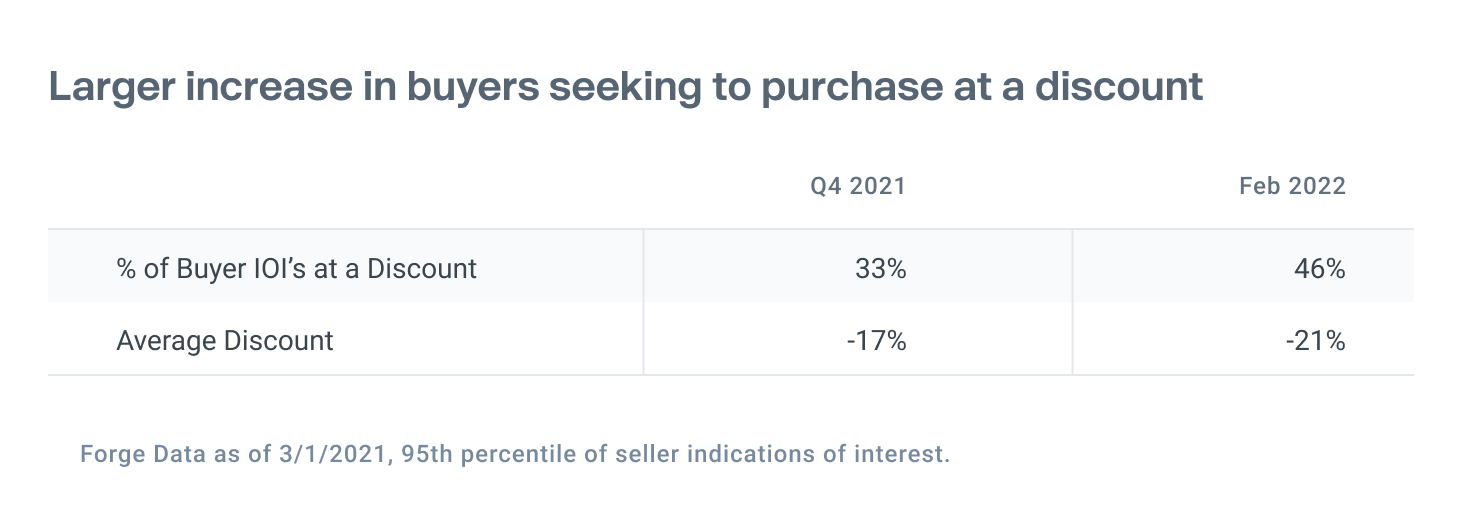

Aggregate private market returns remain strong
Markets may be choppy, but it doesn’t shift the overall trend of investment returns increasingly moving to the private market.
In aggregate over the last 6 months, companies covered on Forge Intelligence delivered 53% returns for investors purchasing stock at the last private round price. Buying in the IPO of that same group of companies would have resulted in an average –36.6% loss by comparison.8
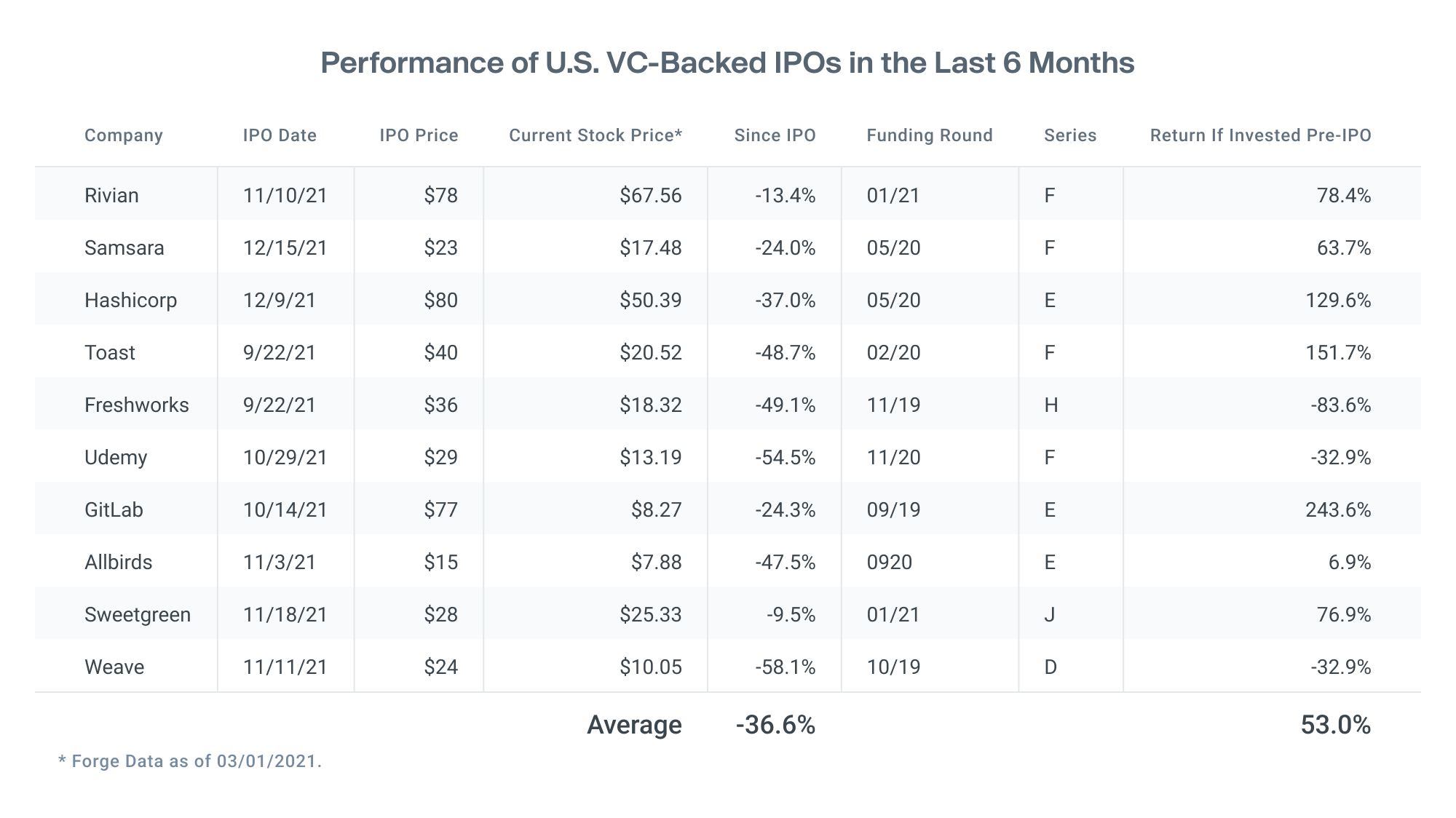

During market shifts, buyers and sellers tend to pause, ask questions, and clarify their perspective before deciding how to react. This is true in the public market and the increasingly active and liquid private market. Buyers and sellers alike need to set their strategy, and doing so requires as much data as possible to properly navigate current market conditions.
With so many private companies on the Forge platform and the possibility of purchasing at a discount, private market investors may have a unique opportunity to tactically buy shares during this drawdown.
